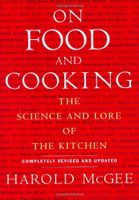Advertisement
Microwaving: Microwave Radiation
By Harold McGee
Published 2004
Microwave ovens transfer heat via electromagnetic radiation, but with waves that carry only a ten-thousandth the energy of infrared radiation from glowing coals. This shift makes for a unique heating effect. Whereas infrared waves are energetic enough to increase the vibratory movement of nearly all molecules, microwaves tend to affect only polar molecules, whose electrical imbalance gives the radiation a kind of handle with which to move them. So foods that contain water are heated directly and rapidly by microwaves. But the oven air, composed of nonpolar nitrogen, oxygen, and hydrogen molecules, and nonpolar container materials like glass, stoneware, and plastic (made of hydrocarbon chains), are unaffected by the microwaves; the food heats them as it heats up.


